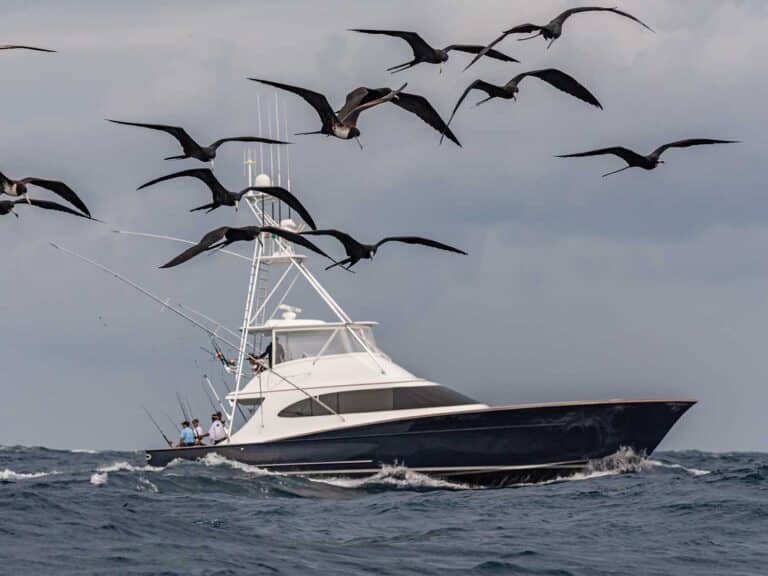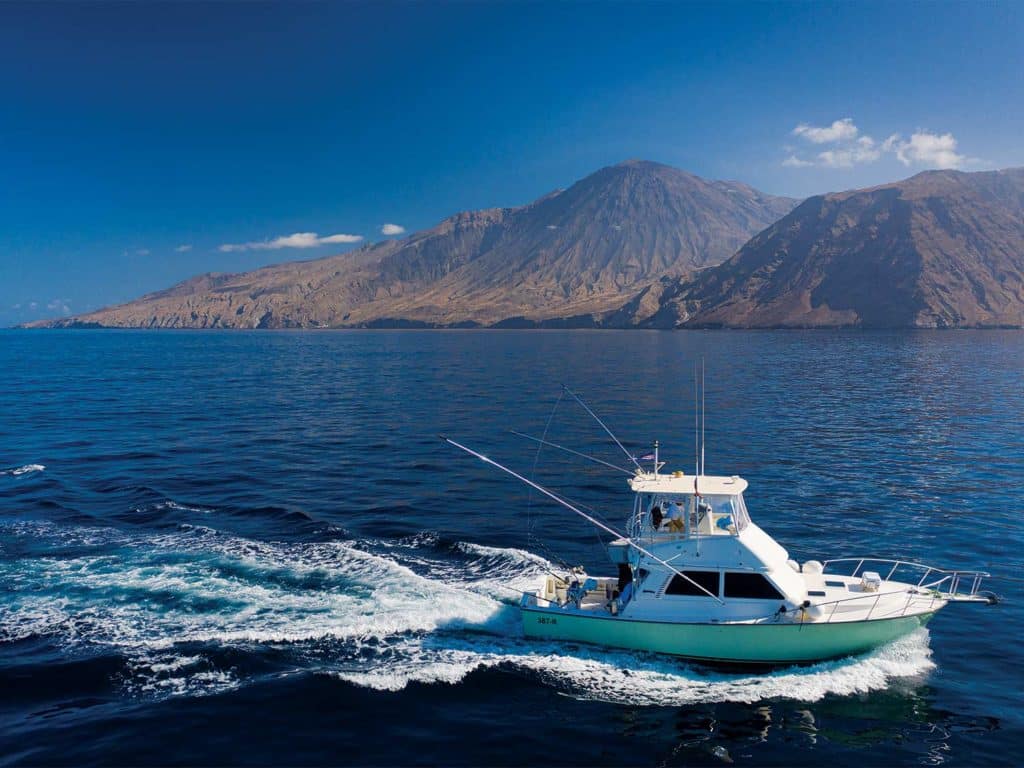
Since humans first learned to fish, catching the largest of a specific species has been the standard benchmark to measure success. With that simple goal in mind, we embark on a journey to quantify the world’s very best destinations in terms of their potential to produce the largest blue and black marlin.
To help accomplish this task, we used several important key indicators. The first is the list of IGFA world records—useful because it points to the largest fish in several categories of line classes, as well as women’s and men’s records. The drawback is that some of the records are quite old and might represent fisheries that are no longer viable. The next was the list of winners of the annual Blue Marlin World Cup, an around-the-world tournament held each year on July 4, where teams fish for eight hours in their respective time zones anywhere on the planet. This is significant because if you want a shot at a double-extra-large blue marlin, you have to spend your day in places where big fish are found in good numbers. The third metric is Grander Watch, a website that chronicles and highlights the achievement of catching blue and black marlin weighing more than 1,000 pounds. Of the three, this is perhaps the most useful in determining where to fish for that trophy of a lifetime, although it’s important to note that not all fish over 1,000 pounds are necessarily weighed in order to be reported; many are released. Here are our top choices, presented in alphabetical order.
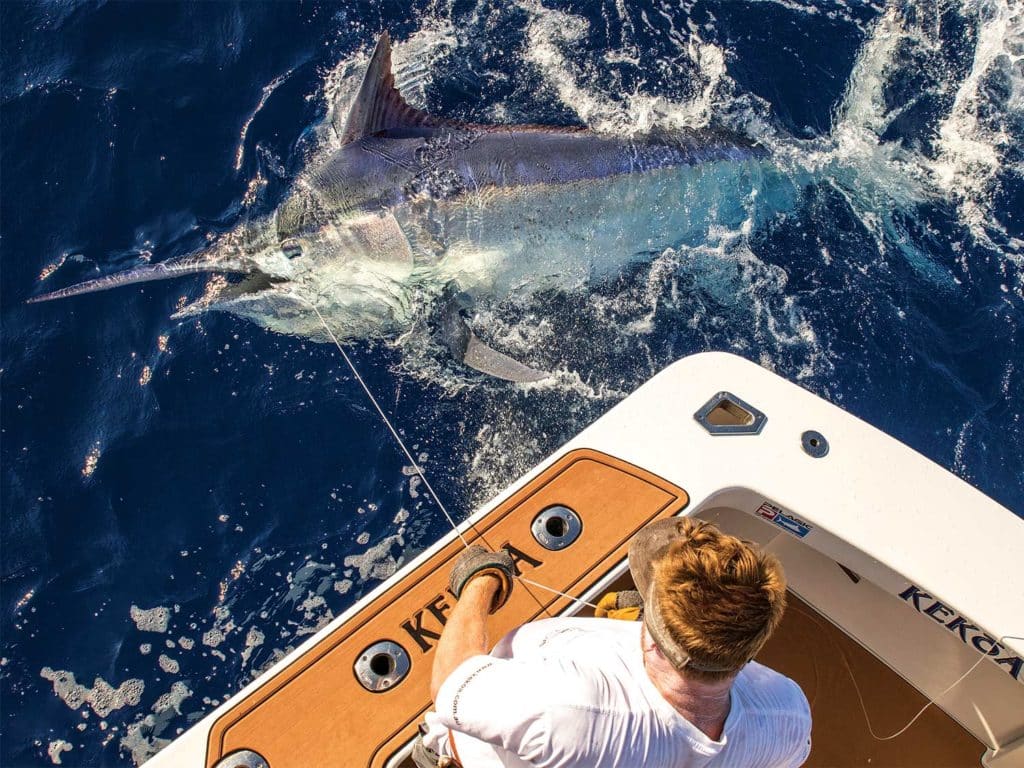
Australia
Claims to Fame: Numerous IGFA world records; 894 blacks over 1,000 pounds reported to Grander Watch from the east coast of Australia
When Americans George Bransford and Richard Obach teamed up to land the first 1,000-pound black marlin—1,064 pounds, to be exact—off Australia’s Great Barrier Reef in September 1966, the news reverberated like a sonic boom throughout the worldwide big-game fishing community, and this new destination was front and center. The seaside community of Cairns became the epicenter for the marlin fishery on the reef, stretching hundreds of miles from Lizard Island in the north and winding down the coast south to Fraser Island. A glance at the IGFA world records shows fish over 1,000 pounds in the men’s 20-, 30-, 50- and 80-pound-test categories, as well as the women’s 50- and 80-pound marks. Simply put, it’s the most consistent location in the world for big black marlin. If you’re a heavy-tackle enthusiast, hit the reef from September through December, and be ready for a sea monster in the spread.
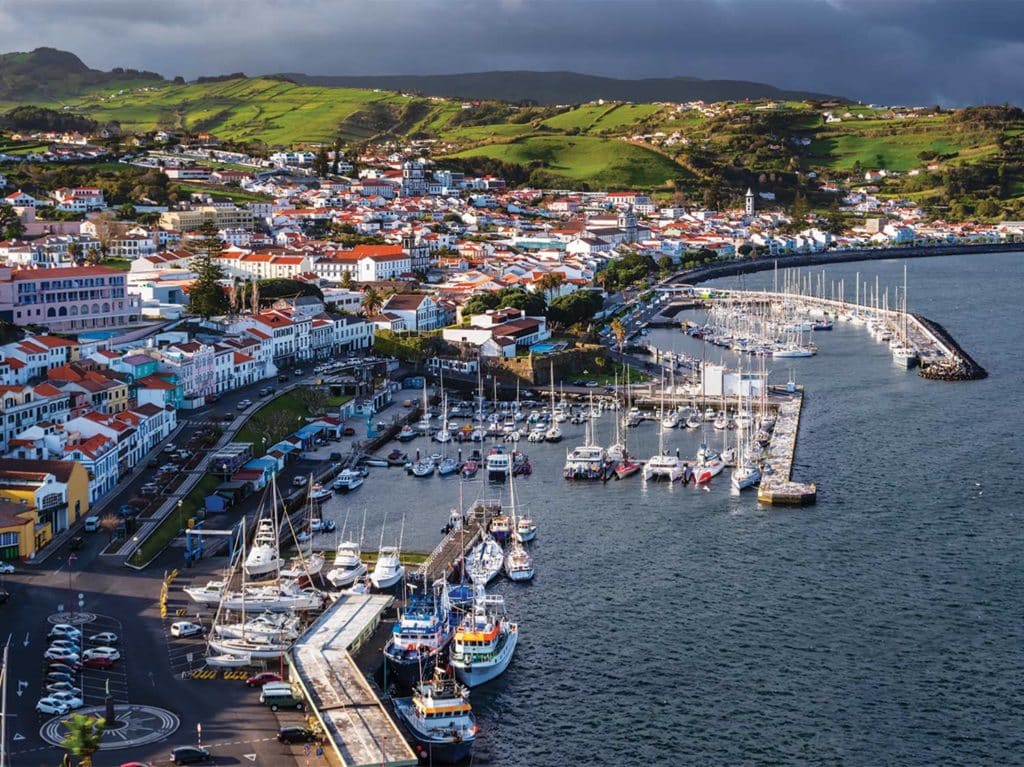
The Azores
Claims to Fame: Two IGFA world records for blue marlin over 1,000 pounds; additional records for men’s 4- and 12-pound-test and women’s 16-pound classes; 14 blue marlin over 1,000 pounds reported to Grander Watch
Just 15 nautical miles south of Horta on the island of Faial in the Azores, the Condor Bank rises sharply to the surface. It’s a natural-bait magnet, and the big blue marlin are not far behind. The average size of the marlin is much of the allure here, with 400- to 500-pound fish in abundance; each season, blues of 800 or more pounds are also encountered with amazing frequency. The prime fishing season, from August through October, coincides with relatively calm sea conditions as well. The Azores record is 1,310 pounds, and it’s also home to the IGFA men’s 80-pound-test record of 1,190 pounds, as well as the men’s 50-pound fish—a 1,146-pounder—among a slew of men’s and women’s line-class records. Along with Madeira, the Azores is one of the two autonomous regions of Portugal, and the European influence on the culture of the islands is another notable attraction.
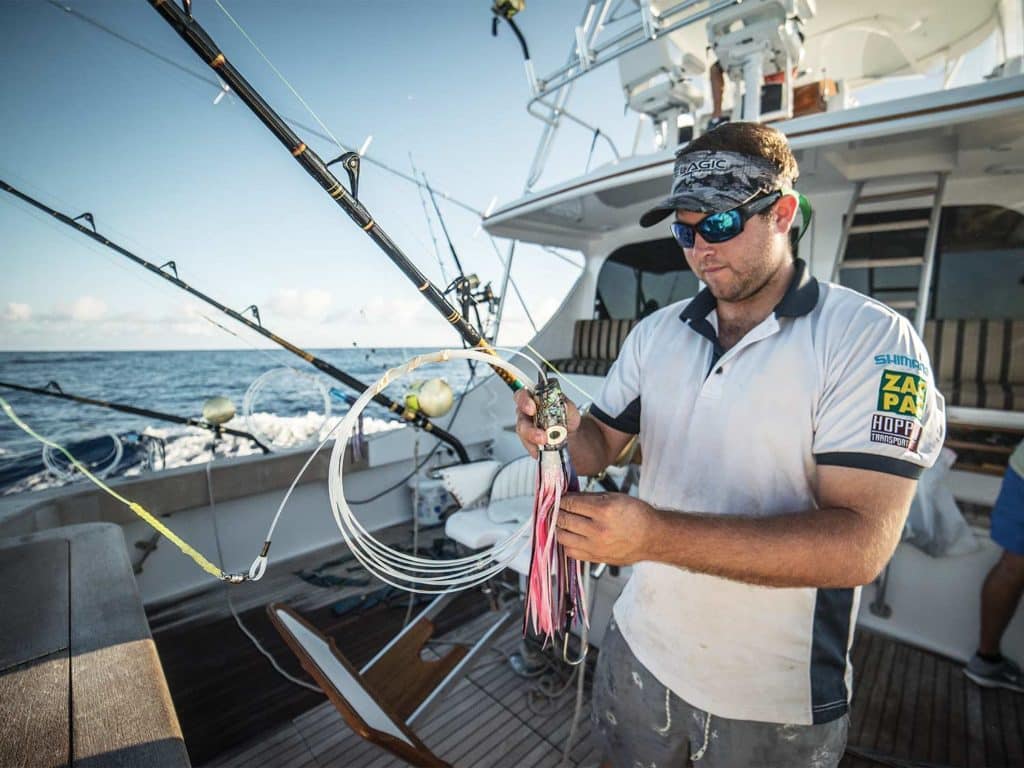
Bermuda
Claims to Fame: Eight World Cup wins, including a three-year stretch from 2003 to 2005; two of those World Cup winners were fish weighing over 1,000 pounds; 19 blue marlin over 1,000 pounds reported to Grander Watch
An idyllic island outpost in the Atlantic Ocean approximately 600 miles east of North Carolina, Bermuda conjures images of pink sand beaches and those iconic Bermuda shorts, but marlin fishermen think in terms of size—Bermuda has it in spades. With eight World Cup wins, it’s second only to Hawaii as the destination with the most victories, producing two marlin over 1,000 pounds for the annual Fourth of July tournament, including the largest in the event’s history when an 1,195-pounder was caught there in 1993 by angler Don Hunt. It’s also home to the Bermuda Triple Crown, a series of top-shelf tournaments that take place throughout the month of July that highlight the outstanding action on the Challenger and Argus banks just offshore southwest of the Bermuda capital of Hamilton. The marinas, restaurants and accommodations are world-class as well.
Watch: Learn to rig a swimming mackerel here.
Brazil
Claims to Fame: The IGFA all-tackle Atlantic blue marlin world record; eight additional blue marlin over 1,000 pounds reported to Grander Watch
When Paulo Amorim headed out for a day of marlin fishing off Vitoria, Brazil, on February 29, 1992, aboard Duda Mares, he had no idea he would cement his nation’s legacy as a big-marlin destination. It was on that day that he landed the men’s all-tackle IGFA world-record Atlantic blue marlin: a 1,402-pound behemoth. Today, most of the sport-fishing action centers on Cabo Frio, east of the capital of Rio de Janeiro, and Canavieiras, up the coast to the north of Rio, which is home to several well-known charter operations. Canavieiras is just 17 miles from the Royal Charlotte Bank, which runs 55 miles to the east. When the southerly current slams into the northern edge, it creates an explosion of cold, nutrient-rich water. Blue marlin can be caught there year-round, but the height of the season is generally from October through March.
Cape Verde
Claims to Fame: Five World Cup wins, including one over 1,000 pounds; 25 blue marlin over 1,000 pounds reported to Grander Watch, including five landed by a single angler during his career
Wild and untamed, Cape Verde is comprised of numerous islands off the western coast of Africa that cover hundreds of square miles of prime blue marlin real estate. The fish here are both large and plentiful, as evidenced by the region’s five World Cup wins, including the 2020 fish of 964 pounds. From the capital of Mindelo on the island of São Vicente, fishermen can spread out to Santo Antão to the northwest and São Nicolau back to the southeast, among many other hotspots. The season gets underway in earnest around March; it can be windy and rough, but it’s possible to fish in the lee of the islands on occasion as well.
The Gulf of Mexico
Claims to Fame: Two World Cup wins; three state-record blue marlin over 1,000 pounds
With bait-attracting oil and natural-gas platforms scattered from Venice in the northern Gulf to the waters off Texas, the Gulf of Mexico is home to arguably the most consistent big-marlin fishery in the United States. A glance at the state records shows that big fish abound: The Florida mark is a 1,046-pounder from Destin, and Louisiana’s marlin is 1,018 pounds, weighed in Venice. The Mississippi record is 1,054 pounds, caught during the 2002 Mississippi Gulf Coast Billfish Classic in Biloxi by Barry Carr aboard Sea Wolff. The final two states are near misses to the 1,000-pound club: The Texas record is 972 pounds, and the Alabama state-record blue marlin was landed in 2020 by angler Ginger Myers and weighed 851 pounds. This is also a fishery that’s significantly impacted by game-changing technology—boats are bigger and faster, with much longer range than ever before, while the combination of sonar and the widespread use of live bait has undoubtedly made specifically targeting large blue marlin much more commonplace.
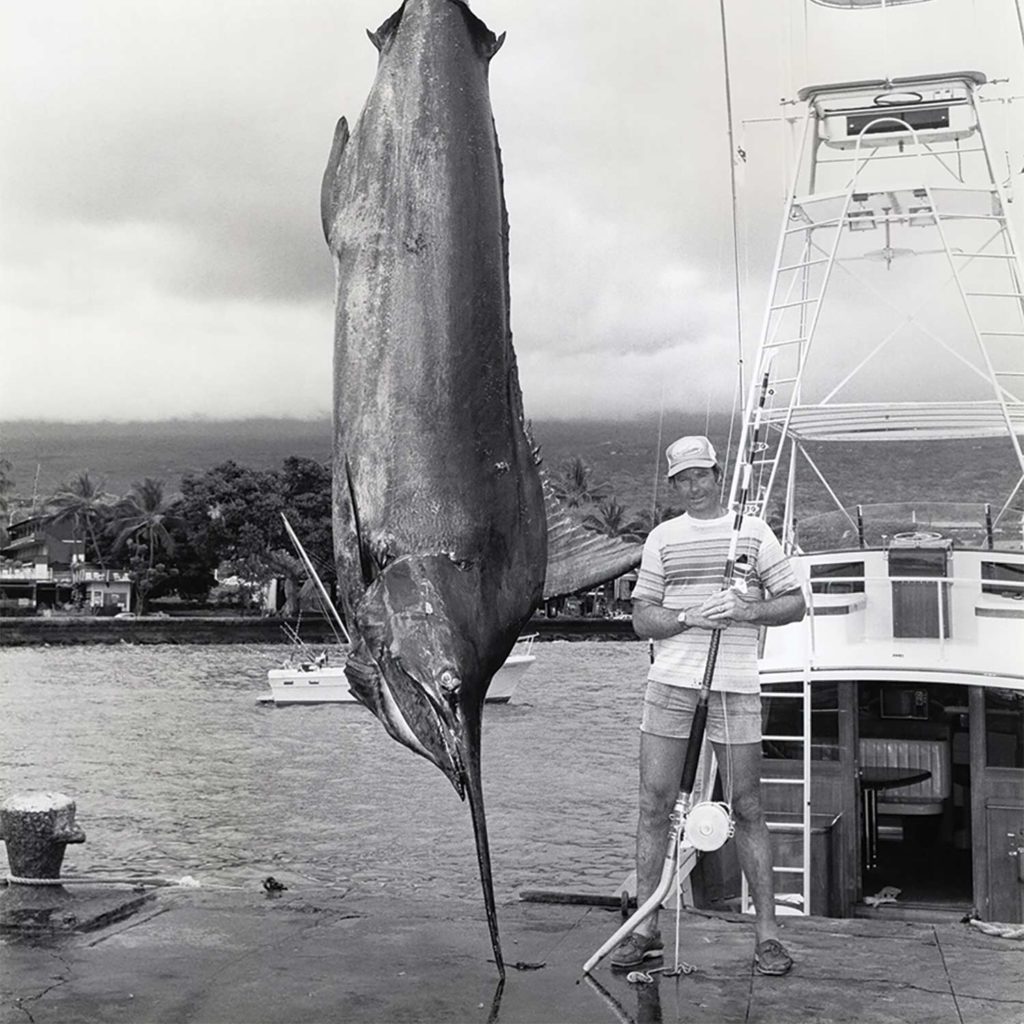
Hawaii
Claims to Fame: Nine World Cup wins; the IGFA all-tackle world-record Pacific blue marlin; 1,000-plus-pound blues IGFA records for men’s 30- and 50-pound-test classes; additional records in the women’s 20- and 130-pound classes; 166 marlin over 1,000 pounds reported to Grander Watch from throughout the Hawaiian Islands, 99 of those from Kona
When President Eisenhower signed the proclamation naming Hawaii as the 50th US state on August 21, 1959, it was already home to a small but growing postwar charter fleet, whose anglers were encountering some truly monstrous blue marlin from time to time, fishing with live bait and then lures as the knowledge and technology adapted to the new technique. In 1954, Capt. George Parker landed a 1,002-pound blue marlin out of Kona on a homemade lure—it was the first blue over 1,000 pounds and smashed the IGFA world record at the time. Years later, angler Jay de Beaubien caught a blue weighing 1,376 pounds fishing aboard No Problem with Capt. Bobby Brown in 1982, a fish that remains the men’s IGFA all-tackle world record for the species to this day. More recently, Capt. Marlin Parker won the 2019 Big Island Marlin Tournament with a 1,035.5-pound blue, further proof that giant blues still abound in the waters throughout the Hawaiian Islands. In fact, there have been more Pacific blue marlin over 1,000 pounds reported to Grander Watch from Hawaii than any other destination on the planet.
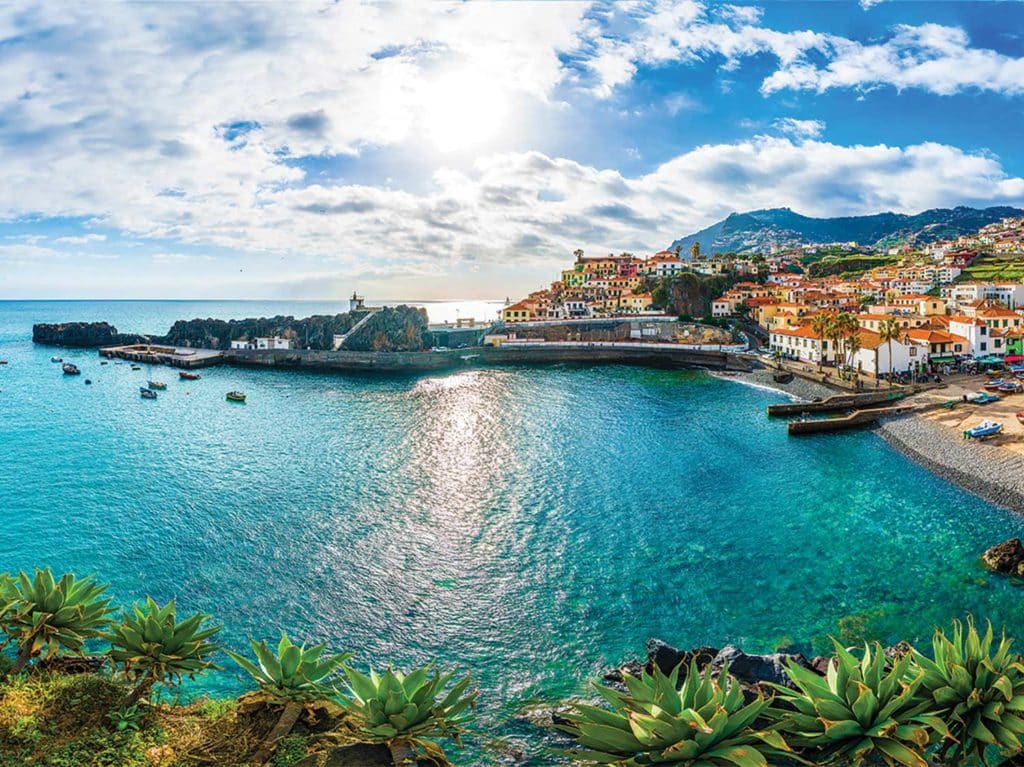
Madeira
Claims to Fame: Six World Cup wins, including three back-to-back wins from 1995 through 1997; IGFA world records in the men’s 20- and 30-pound-test divisions and women’s 8-, 12-, 20-, 30- and 80-pound divisions; 58 blue marlin over 1,000 pounds reported to Grander Watch
It doesn’t happen every year, due in part to the cyclical nature of many of the world’s big-marlin destinations, but when it’s on, Madeira can be crazy for huge blues. This archipelago consists of four primary islands located off the northwestern coast of Africa, and is an autonomous region of Portugal. In the late 1990s, it produced back-to-back wins in the World Cup, as well as three world records, notably an 872-pound blue for Stewart Campbell, which set the IGFA men’s 30-pound-test record. In 2018, Gary Carter landed an 806-pound fish in Madeira to earn the 20-pound record, just one of many held by him and his wife, Sherrell. The fishing is close to shore and in flat-calm sea conditions and beautiful weather, which are always welcome.
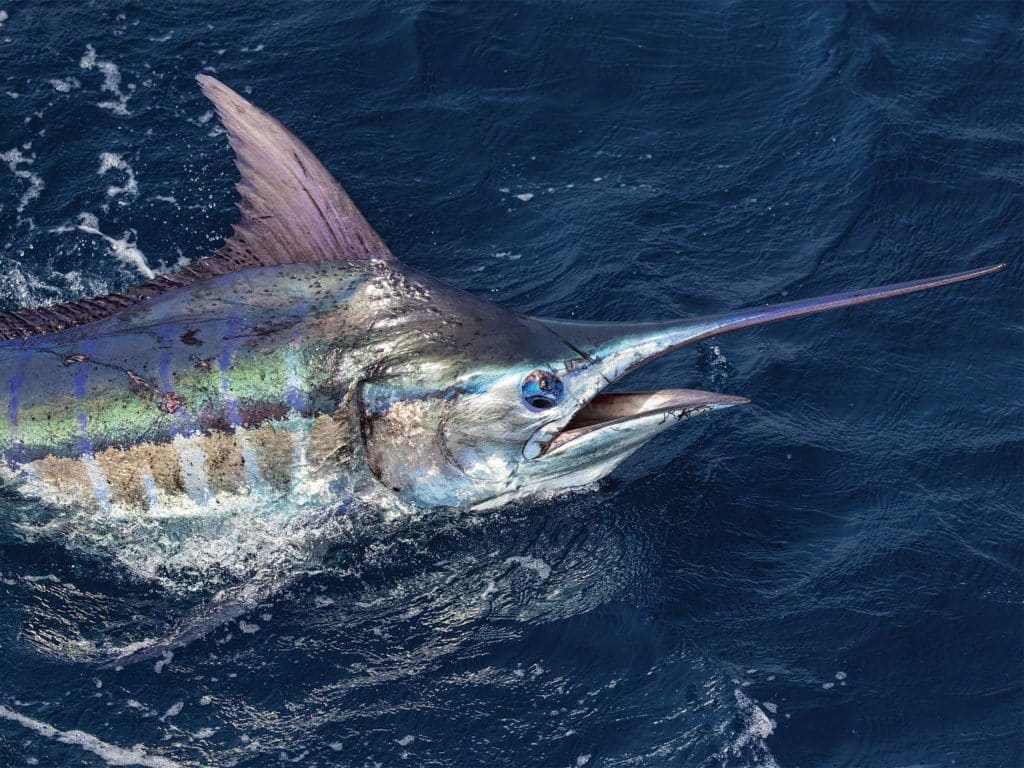
Mauritius
Claims to Fame: IGFA men’s 80-pound-test world record; 52 more over 1,000 pounds reported to Grander Watch
Perhaps not as well-known as many of the other destinations on this list, the Indian Ocean nation of Mauritius might fly under the radar, but it certainly produces some giant fish. The season begins in November and runs through April most years. According to Grander Watch, the Mauritius national-record blue marlin weighed 1,430 pounds and was caught by angler Louis Simonis on Challenger I in 1984. Two others in excess of 1,300 pounds have also been weighed there: a 1,348-pound blue in 1987 and a 1,355-pounder in 1988. In 2007, it produced the men’s 80-pound-test world record: a 1,237-pounder for multiple-world-record-holder Stephen Kreupl. Black marlin abound there as well.
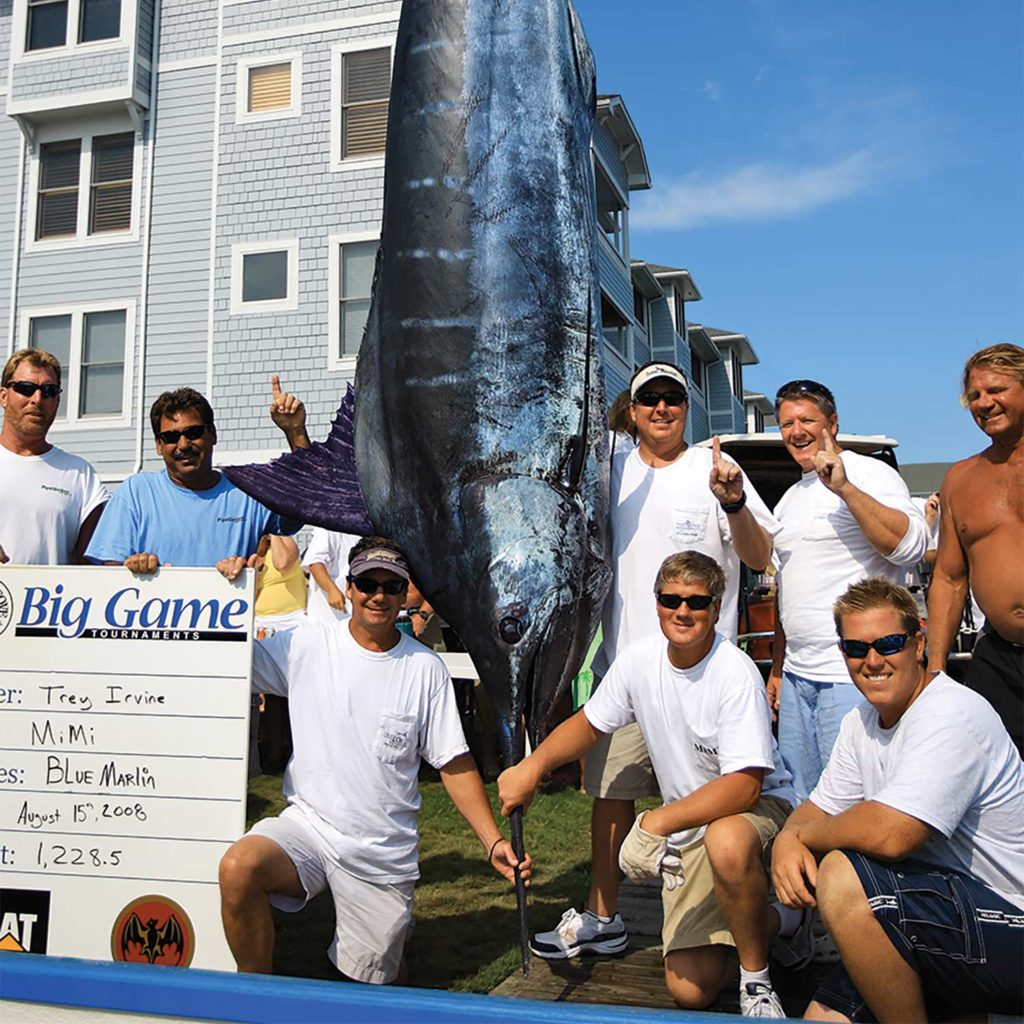
North Carolina
Claims to Fame: State record over 1,000 pounds; one World Cup win; eight additional blues reported to Grander Watch
Capt. Harry Baum put the Old North State on the big-marlin map in 1974 when his angler, Jack Herrington, caught the state’s first grander: a fish weighing 1,142 pounds, on Jo Boy, fishing out of Oregon Inlet. Since then, there have been at least eight additional blue marlin in excess of 1,000 pounds, including the state record: a 1,228-pounder caught for the win in the 2008 Pirate’s Cove Billfish Tournament by Trey Irvine aboard Mimi, captained by Mike King. It also produced a World Cup winner in 1999 when Robert Gollahon caught a 763-pound blue on Southern Exposure. Late summer and early fall are prime times off the Carolina coast from Morehead City to Oregon Inlet, with teams tempting big blues on artificial lures and heavy tackle in popular tournaments such as the Big Rock Blue Marlin Tournament and the aforementioned Pirate’s Cove event.
Read Next: Build a tournament-winning team with these tips.
Honorable Mentions
These destinations didn’t quite make the cut but are still memorable enough to be included in this list.
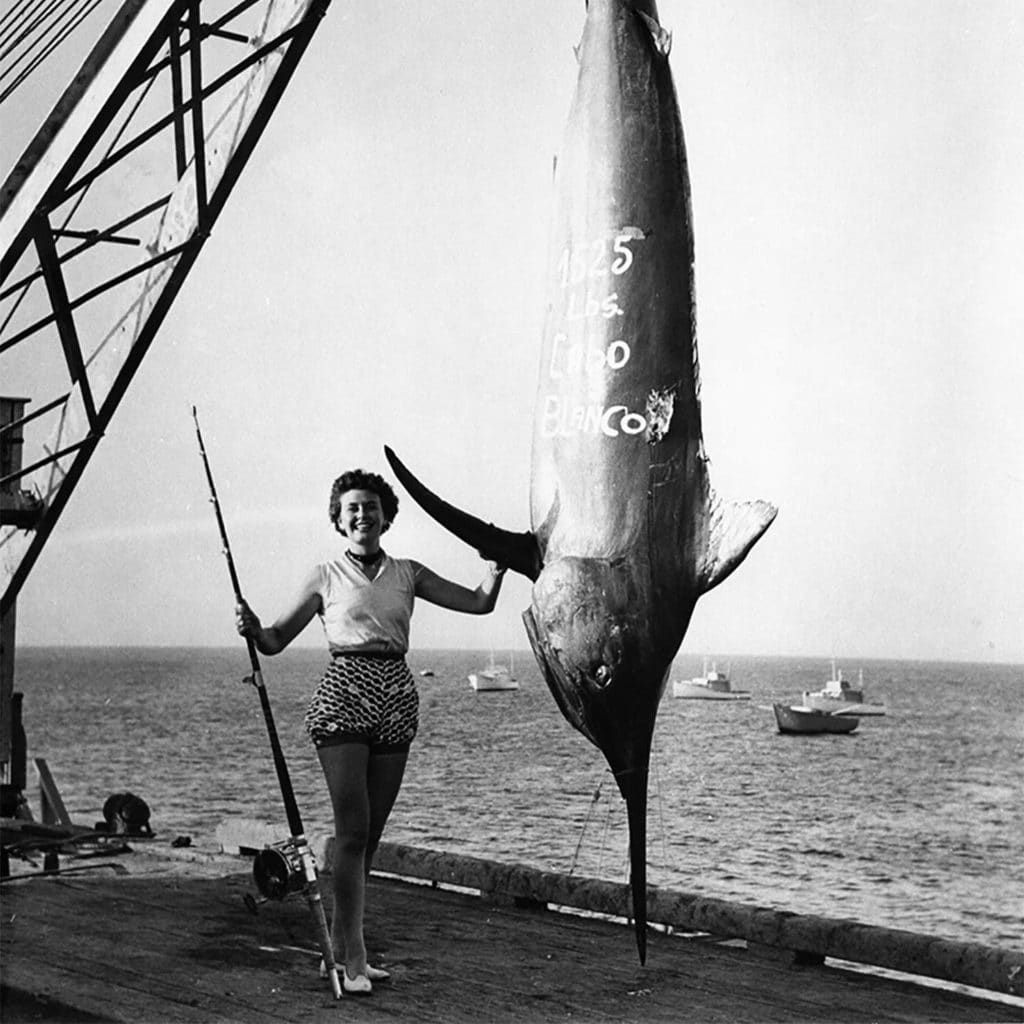
Peru
Home to the IGFA’s all-tackle black marlin world record at 1,560 pounds, as well as the women’s all-tackle record of 1,525 pounds for Mrs. Charles Hughes (above), Peru has produced some memorable catches, although both records are quite dated (1953 and 1954, respectively). However, a new resort and marina development, Marina Coast Peru, is now well underway, just 25 miles north of Cabo Blanco and its historic fishing grounds. Time will tell if there could be a return to those glory days of old.
Australia’s West Coast
While the land Down Under is documented as the world’s best black marlin destination, it was not until 2018 that the nation celebrated its first blue marlin over 1,000 pounds. That event took place at the wild and woolly western coastal town of Exmouth on the country’s western coast, when Capt. Eddy Lawler weighed a fish of 1,089 pounds. Exmouth is home to a wide number of incredible offshore fisheries, including, it seems, big blue marlin.
French Polynesia
An overseas collectivity of France comprised of more than 100 islands in the South Pacific, French Polynesia includes such memorable destinations as Tahiti, Bora Bora, and the Tuamotu archipelago, all of which are astride some interesting bottom structure and fringed by lush coral atolls. Numerous large blue marlin have been reported to Grander Watch over the years, including a 1,474-pounder in 2015 and a 1,301-pound fish in 2011. Most recently, a blue marlin weighing 1,106 pounds was caught in January 2021. Many feel that these waters could produce the next all-tackle world-record Pacific blue marlin.







